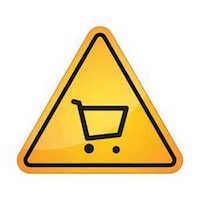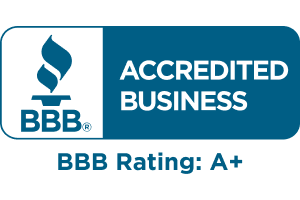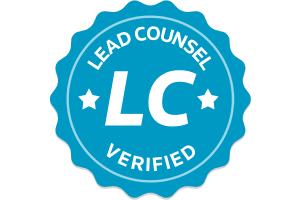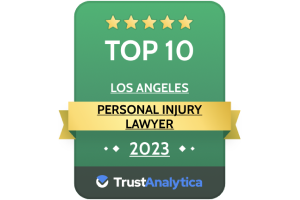for Over 25 Years
California Retail Store Accident Claims

California retail store accident claims can be difficult to prove. What is California law on the duty to inspect property and prevent injury? When a mishap on commercial property such as a slip and fall, trip and fall, collapse of shelving or falling merchandise, or collision with a forklift or other equipment occurs, is the retailer responsible for resulting bodily harm caused by this calamity?
Let’s face it, whether you live in San Diego, Los Angeles, Riverside or San Bernardino County, we all, at one time or another, shop at one of the large national retail chain stores like Home Depot, Lowes Hardware, Best Buy, Target, Wal-Mart, or even a grocery chain like Ralphs, Vons or Food-4-Less. These retailers, for the most part, have reasonable inspection and maintenance policies that keep the store in a fairly safe condition. However, to err is human and there are times when policies are flawed or not followed by employees and even managers and mishaps occur. These can involve a slippery substance being left on the floor for too long, improper use of cleaning products, stacking inventory too high or in a way that becomes unstable, leaving carts or boxes in the aisle or walkway, thereby creating a tripping hazard, or not providing proper assistance to customers in retrieving items from shelves. When any of these scenarios play out, it can result in customers or patrons falling down and breaking bones or injuring their neck or back, lacerating their skin on protruding, sharp objects, being struck in the head and suffering concussions or other trauma and any number of other ordeals.
Laws of the State of California on Unsafe Conditions of Commercial Property
- Negligent Maintenance of Property Defined: A store owner is deemed to have engage in “negligent maintenance of property” if there was a condition on their premises that created an undue risk of harm, the business operator knew about it or could have known about it if they had used reasonable care, and the proprietor failed to repair the condition, protect against harm caused by the dangerous state of the property, AND fails to warn the public about he danger. California Civil Jury Instruction, 1003.
- How Do You Decide When a Business Owner “Should Have Known” About A Dangerous Situation? In most cases, Cal. tort law requires proving that the condition which caused injury existed long enough that the retail establishment had sufficient time to discover it had they used “reasonable care”. California Civil Jury Instruction, 1011. However, there are two caveats to this rule as follows:
- Duty to Conduct Reasonable Inspections: In the California appellate decision of Ortega v. K-Mart Corp. (2001) 26 Cal.4th 1200, the CA Courts made the following ruling:
“Plaintiffs may demonstrate the storekeeper had constructive notice of the dangerous condition if they can show that the site had not been inspected within a reasonable period of time so that a person exercising due care would have discovered and corrected the hazard. In other words, if the plaintiffs can show an inspection was not made within a particular period of time prior to an accident, they may raise an inference the condition did exist long enough for the owner to have discovered it.”
- Creation of the Dangerous Condition By the Shopkeeper Presumes Notice: California law has further established that, “if the condition which caused the risk of harm” was created by a store owner OR their employee, this it “MUST” be concluded that the owner knew of the dangerous state of the premises. California Civil Jury Instruction 1012.
- Duty to Conduct Reasonable Inspections: In the California appellate decision of Ortega v. K-Mart Corp. (2001) 26 Cal.4th 1200, the CA Courts made the following ruling:
What Type of Damages Can be Recovered in a Store Accident Claim in California
In California, if you’ve been injured in a retail store accident, the types of damages you can potentially recover through a personal injury claim typically fall into two main categories: economic (or “special”) damages and non-economic (or “general”) damages. There might also be a possibility for punitive damages, depending on the specifics of the case. Here’s a breakdown of these categories:
Economic Damages:
- Medical expenses: This can include costs for emergency room visits, hospital care, surgery, medication, physical therapy, and any ongoing medical treatments or rehabilitation related to the injuries sustained in the accident.
- Lost wages: If the injury has resulted in missed work, you can claim compensation for the income you’ve lost. This also encompasses loss of earning capacity if the injuries affect your ability to work in the future.
- Property damage: If personal property was damaged in the accident (such as if a shelving unit collapsed on you and also broke your watch), you could be compensated for repair or replacement costs.
Non-Economic Damages:
- Pain and suffering: Compensation for the physical pain and emotional distress you’ve experienced due to the accident. This includes compensation for any long-term physical discomfort or disabilities.
- Emotional distress: For psychological impacts such as anxiety, depression, PTSD, and other mental health issues stemming from the accident.
- Loss of enjoyment of life: If your injuries prevent you from enjoying your usual hobbies, activities, or daily routines.
Examples of Accidents Causing Injury in Retail Stores in California
Accidents in retail stores can happen in various ways, and understanding the common types can help in identifying potential hazards and preventing future incidents. In California, as in other places, certain types of accidents tend to occur more frequently in retail environments. Here are some examples:
Slip and Fall Accidents: These are among the most common incidents in retail stores and can result from spilled liquids, recently mopped floors without proper warning signs, loose or uneven flooring, cluttered walkways, or poorly maintained carpets and mats.
Falling Objects: Customers can be injured by merchandise falling from shelves or displays. Overstocked items, improperly secured goods, or items placed on shelves that are too high can pose significant risks.
Shopping Cart Incidents: Accidents involving shopping carts can lead to injuries, such as when a cart tips over, strikes a shopper, or when a child falls out of a cart. Incidents where a store employee pushing a cart and not watching where they are going and striking a patron are also common accident scenarios.
Parking Lot Accidents: The areas surrounding retail stores, including parking lots, can be sites for accidents, involving vehicle collisions, pedestrian accidents, or falls due to poor lighting, uneven surfaces, or potholes.
Crowd-related Injuries: During sales events or holiday shopping seasons, overcrowding can lead to trampling, falls, or other injuries due to poor crowd management or inadequate security.
Tripping Hazards: Trips can occur due to obstacles or debris in aisles, electrical cords, rugs, or mats that are not flat against the floor, or uneven thresholds between different sections of the store.
Assaults and Robberies: Although less common, customers can become victims of assault, theft, or other violent crimes if a retail store fails to provide adequate security measures.
Door and Entrance Accidents: Automatic doors that malfunction or manual doors that are improperly maintained can cause injuries to customers entering or exiting the store.
Chemical Exposures: Exposure to cleaning supplies, spills of hazardous materials, or leaking products can cause respiratory issues, burns, or other health problems.
The Role of the Personal Injury Attorney in Establishing A Right Compensation In Retail Store Accident Claims
Based upon the laws cited above, a person shopping in Southern California including Los Angeles would be entitled to be compensated by the store owner or their insurance company if the management or employees of a big box store like Home Depot either: (a) had a property danger that existed for long enough to fix it before someone got hurt; (b) Failed to inspect to know that such a danger existed; or (c) created the condition by such things as placement of items in aisles, stacking boxes too high, or using improper techniques in the maintenance of their trade or business. The problem is that when someone gets hurt at a store, there is an immediate attempt to do a “cover up”. Often, reports are taken and claimed to be “internal” or “proprietary”, video tape footage gets erased within a short time loop, witnesses are attempted to be kept “confidential” and many other tactics are used to avoid discovery of the truth. It takes an aggressive and qualified injury lawyer to get to the heart of the matter through the legal discovery process. This is often the only way that liability can be proven and justice can be served.












